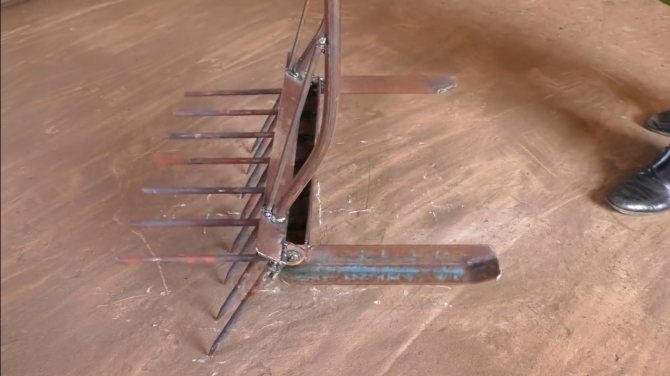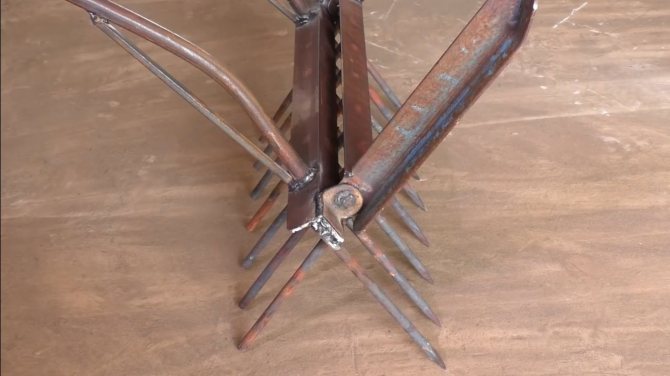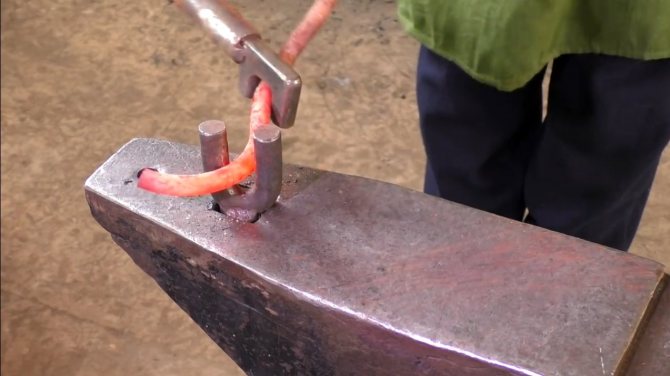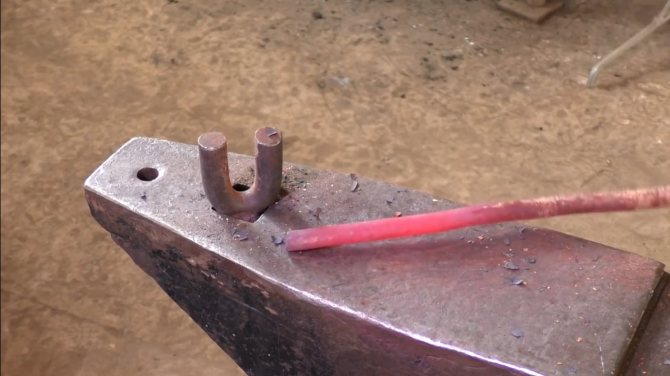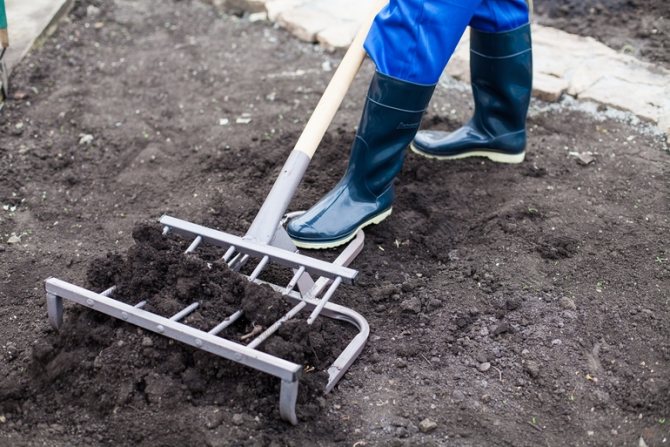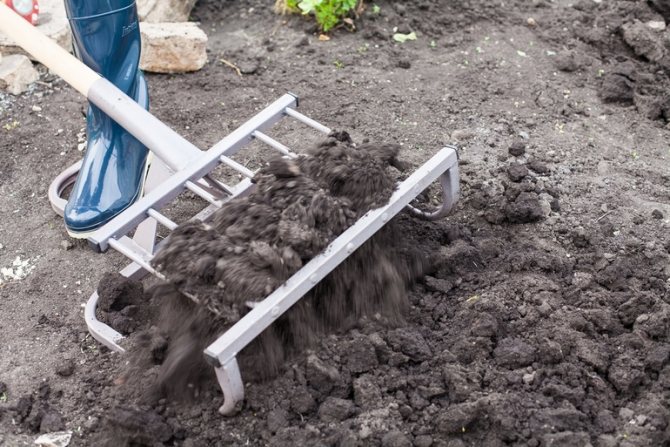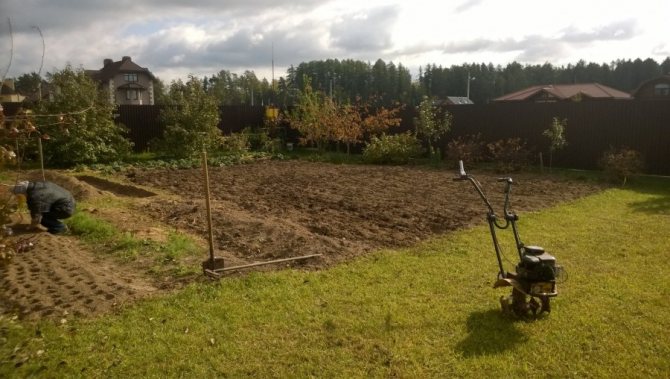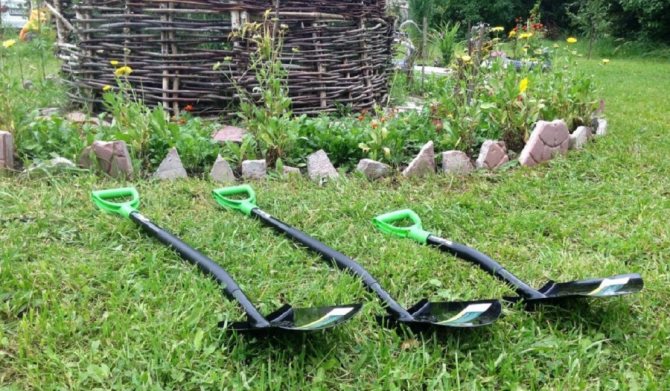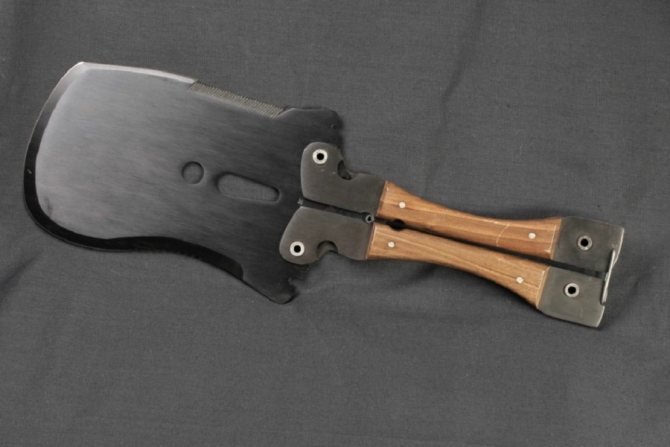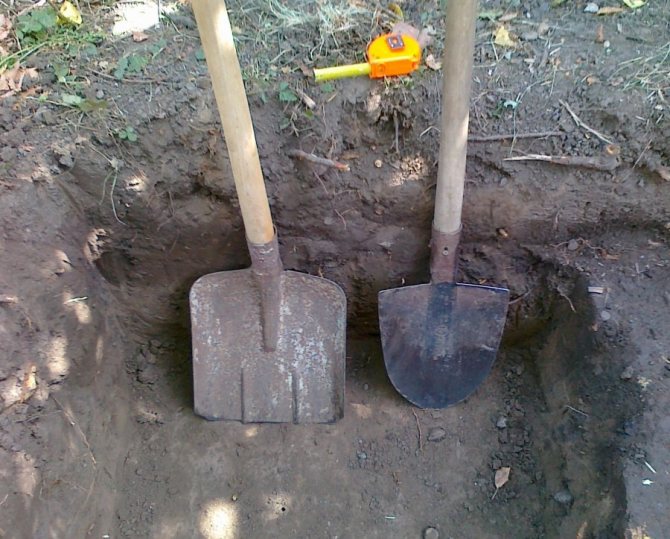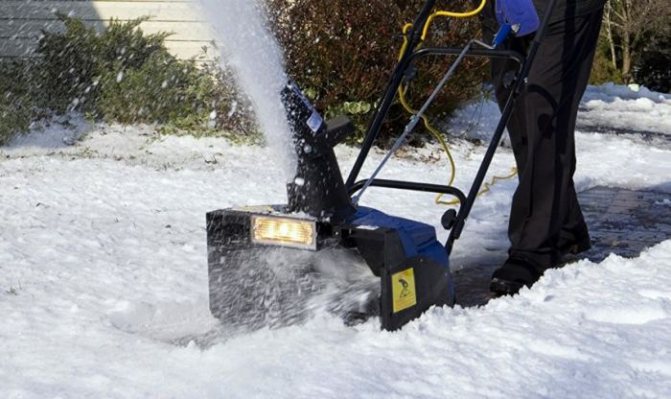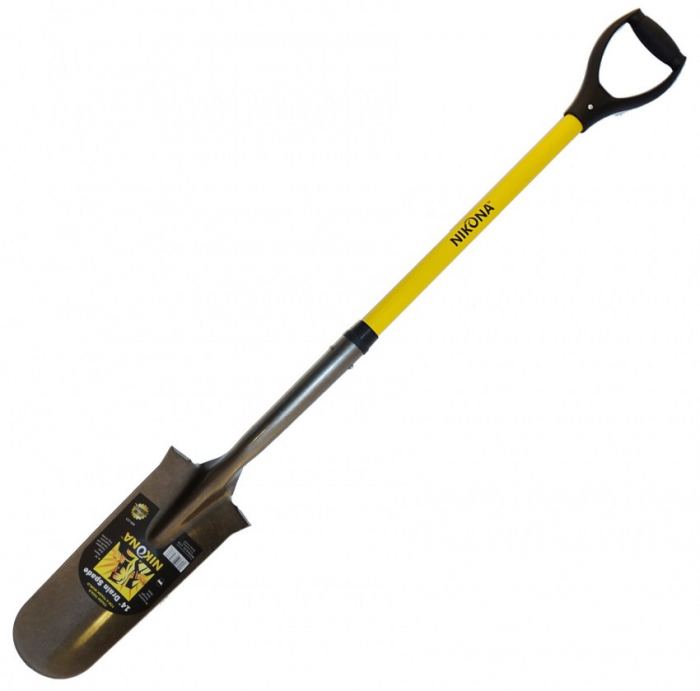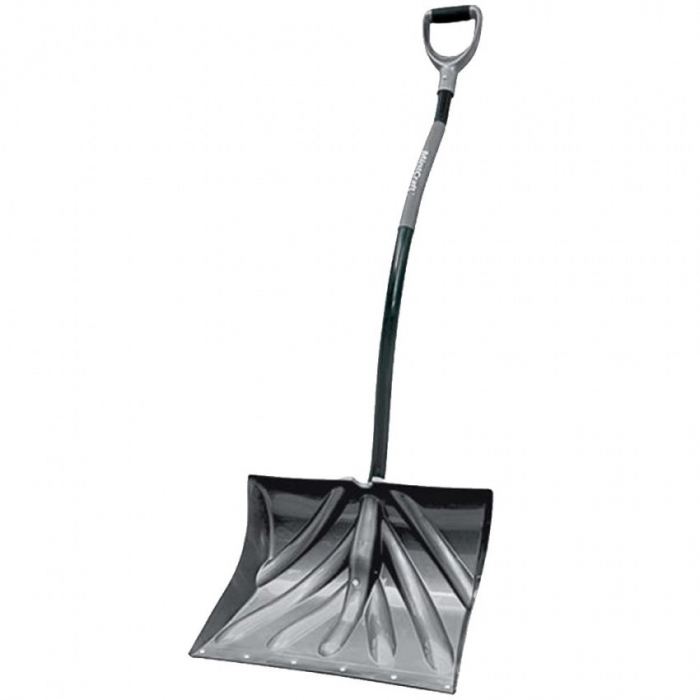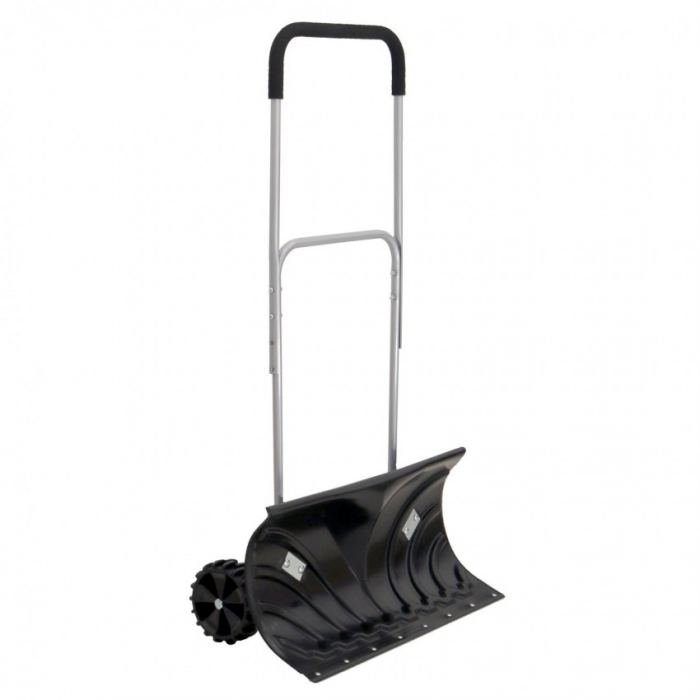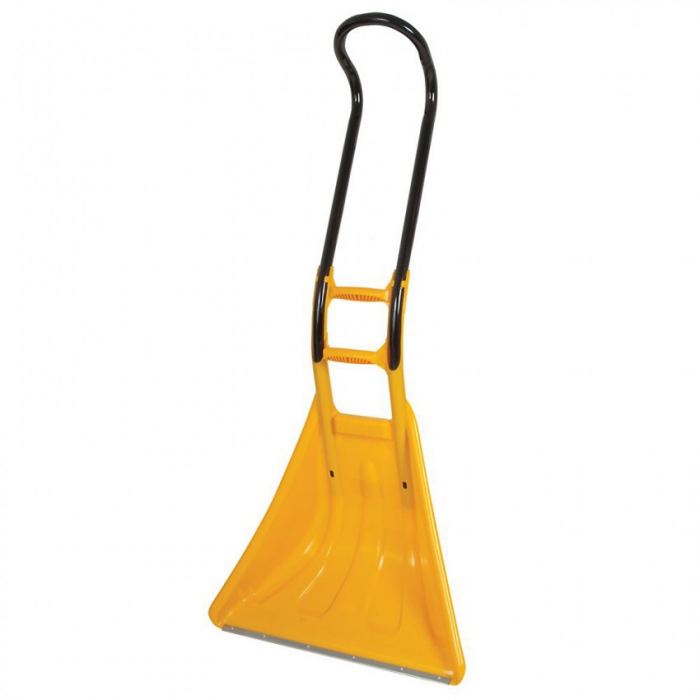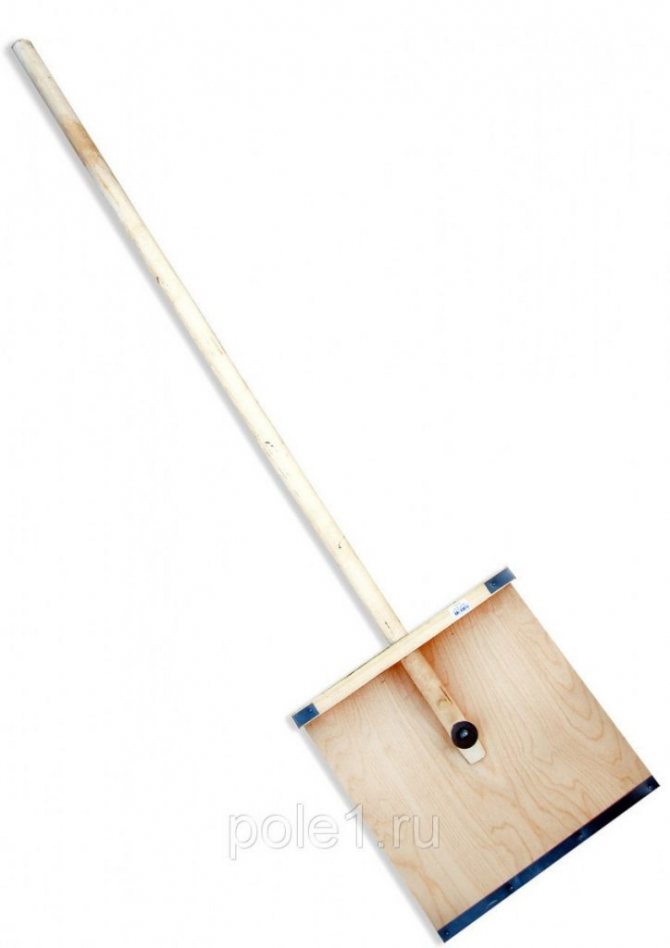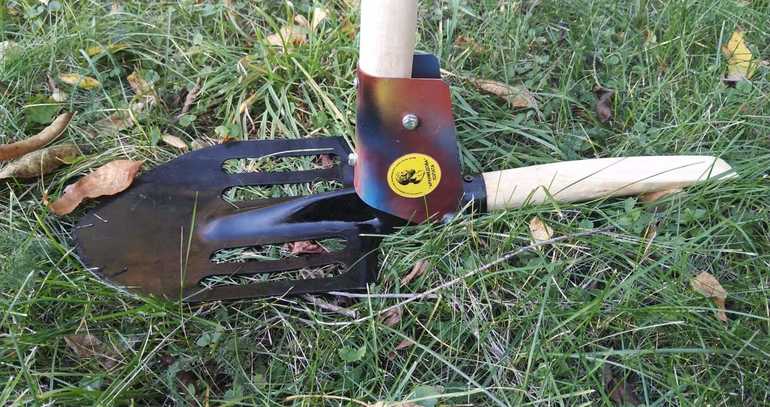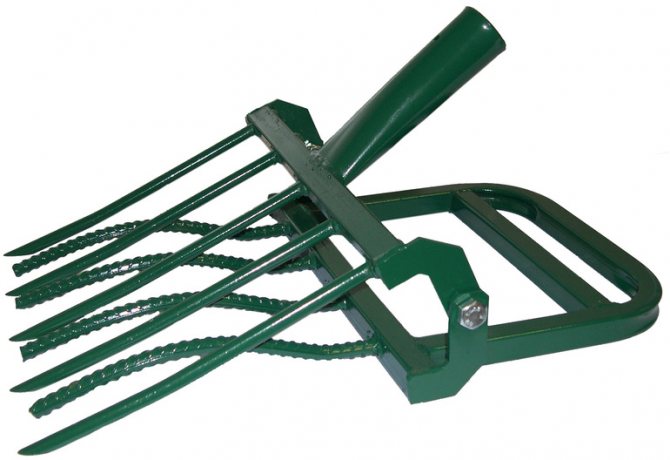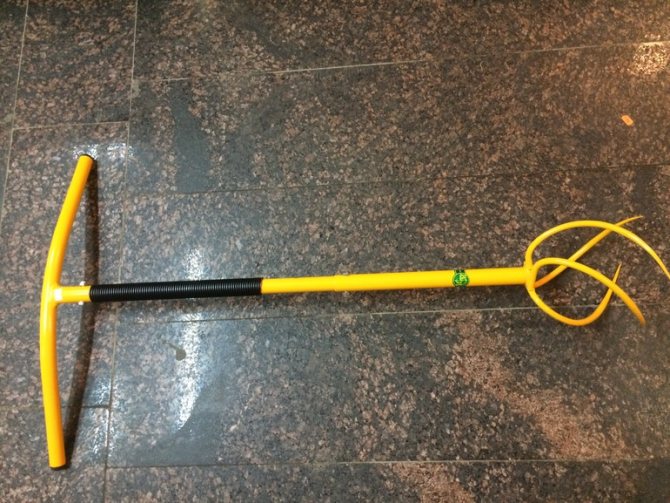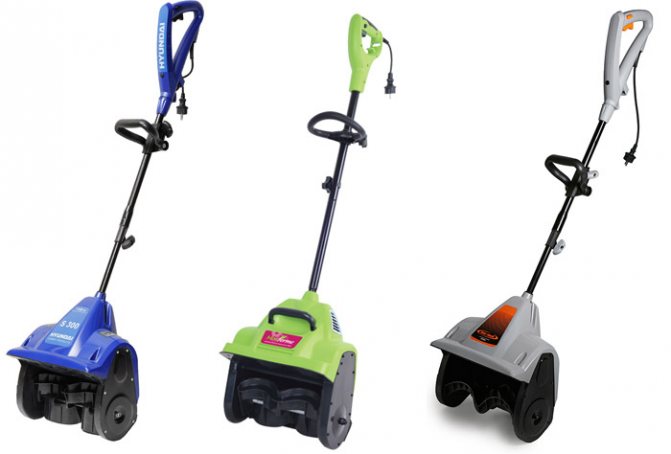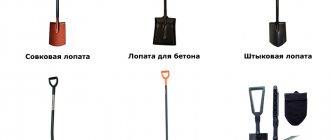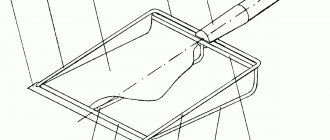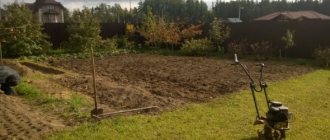What is different and what can
To be precise, this is not a shovel, but a ripper, since it does not just dig, but also breaks up clods. Miracle shovel consists of two (sometimes one) slats with pins, movably connected. Some models also have a backgauge - for easier digging of dense, heavy soil. So it actually looks more like a double pitchfork (see photo below).
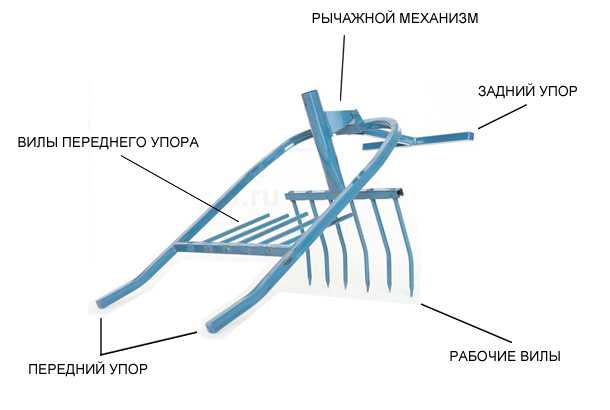
Miracle shovel and its components
It is clear from the figure that this tool does not have a shovel as such, but the differences from the classic bayonet shovel do not end there. She also has a handle much higher - it should reach your shoulder. It is also convenient if there is a crossbar at its top - you can act with two hands.
The miracle shovel performs three operations at once:
- loosens the soil;
- breaks clods;
- “Extracts” the roots of weeds, without tearing or cutting them (in any case, damaging them much less);
- easily digs root crops - you can dig carrots, potatoes, etc.
But its main advantage is that it greatly facilitates digging the earth, and the main load falls not on the back, as when using a conventional bayonet shovel, but on the legs (to drive the working forks into the ground) and on the hands (to turn the forks out of the ground). The back during work is in an upright position and is almost unloaded.
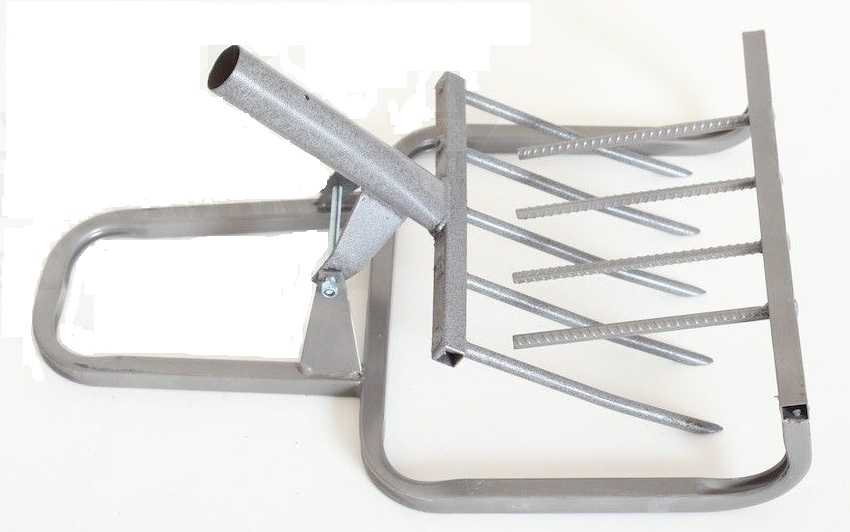

Another version of the miracle shovel
The only drawback of this tool is the weight. It is indeed much larger than that of a bayonet. But the super shovel can be rearranged, it does not need to be lifted. Rather, it is raised only a few times: when it is set on the ground at the beginning of the row. Then, by pulling the handle, it is simply overtightened.
There is another very attractive moment in using a miracle shovel - the garden is digging at least twice as fast. This is due to the wider working part - up to 50-60 cm. With little physical activity, this is very good.
How to work
Although this construction is not particularly complicated, working with it has its own peculiarities. Firstly, you need to start from the far edge of the bed, then move backward, gradually dragging the pitchfork back. Well, the general procedure is as follows:
- Grasping the handle, put the miracle shovel, support it on the front ripper.
- Stick a pitchfork into the ground. Drive them so that the backgauge touches the ground. If the ground is hard, compact, additional force may be needed - push your foot against the front forks bar.
- Pull the handle towards you. With this movement, the forks will begin to move upward. As they rise, they pass through the forks of the front stop, breaking the lumps.
- Drag the device back a little, repeat all actions (plug in, press, pull the handle).
In reality, everything is very simple. It is worth trying a couple of times and then everything is repeated “automatically”.
The device of a miracle shovel for earth or snow - how to choose according to characteristics
There is a lot of work in the city and in the garden, but the most exhausting processes are the digging of roots, removing the roots of weeds and cultivating the land. Digging begins, as a rule, a little in advance due to the great physical activity. You can significantly reduce the complexity and dig up the garden faster by purchasing a universal excavator - a miracle shovel for digging the earth.This simple and inexpensive device is very effective. The process of loosening and breaking up clods is accelerated even on difficult soils.
Constructions
In addition to the option that is shown above (under the name "Tornado", "Excavator" or "Plowman"), there are several more options for the designs of the miracle shovel under different names.
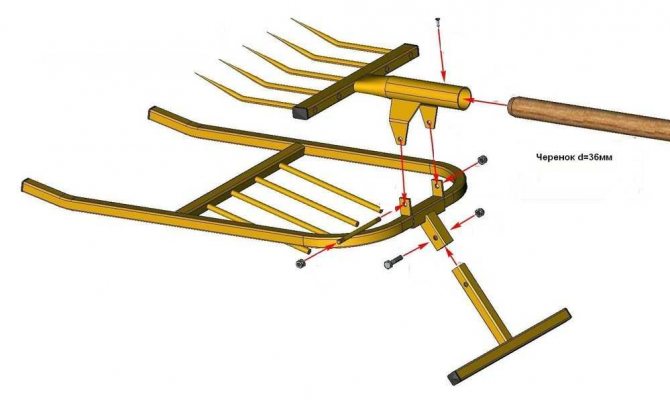

Assembly drawing of the miracle shovel
Soil cultivator without front stop
This design also has working and support forks, but does not have a front stop. Therefore, it is less bulky, weighs a little less. But the front stop provides increased stability when working. And the drag weight is not that important.
The handle is attached to the working forks, the back stop is welded to the comb of the second forks. Both of these structures are movably interconnected (even door hinges can be used).
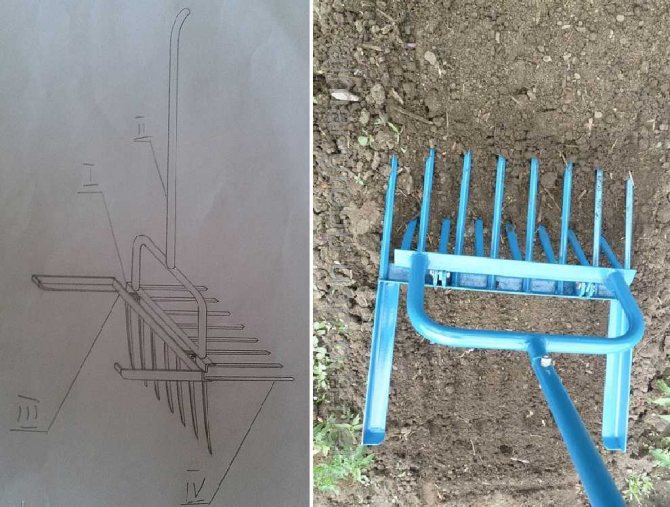

Ripper miracle shovel for easy tillage
The photo shows one of the implementations, which is made on the basis of a corner and a round pipe. When working, they drive the pins into the ground by pressing on the crossbar, and not on the stop, as in most models.
Digger
The Digger version is essentially a wide forks with a stop for easier eversion and a high, powerful handle.
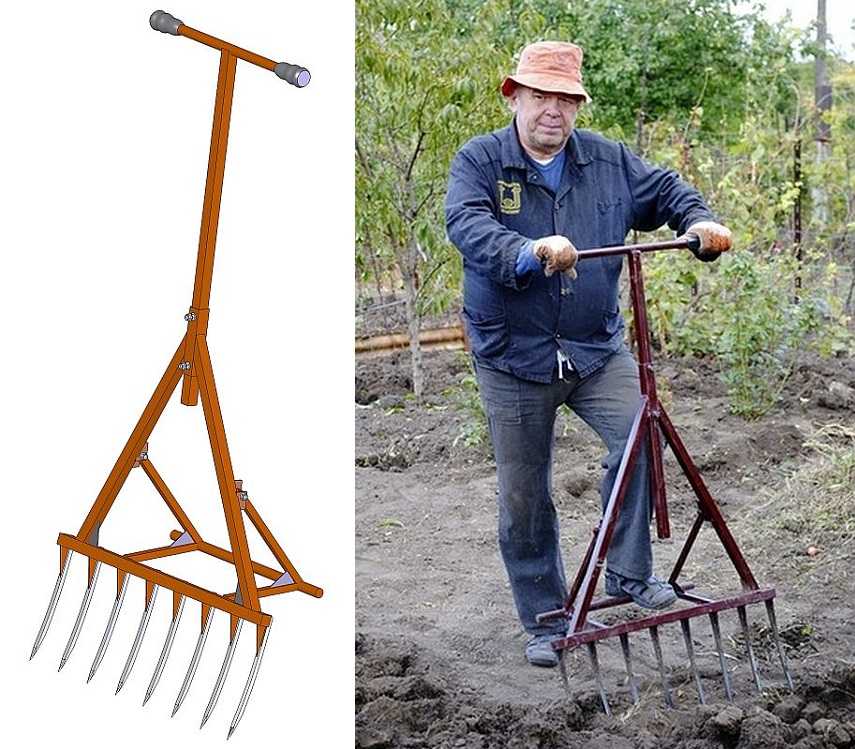

Miracle shovel "Digger"
The peculiarity of this design is the stop and the adjustable handle. It is fixed with two bolts, matched to the height of the working person.
The emphasis is not stationary, but movable. It is fixed to the frame. When the pins are immersed in the ground, they press on it with their foot, then, without removing the leg, they turn it out by pressing the handle of the pitchfork from the ground.
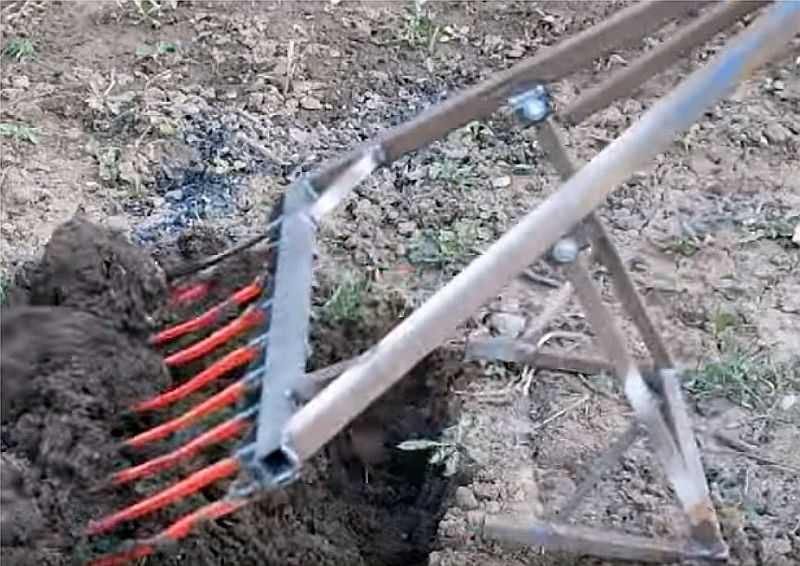

Digger in action
Physical activity during work is low, work is progressing quickly. But this miracle shovel will not work for hard and lumpy soils: it does not crush the soil. She, under her own weight, is pressed through the pitchfork. But this is possible only on loose soils. On clay or black soil, it is better to have a second comb with pins.
How to make a miracle digger, see the next video.
Easycop
This design of the miracle shovel is slightly different from the previous one. The stops in it are rounded, the handle is arched, but the basis of the structure is the same. Some drawback - there is no way to adjust the handle, but otherwise everything is the same - a movable stop and working forks.
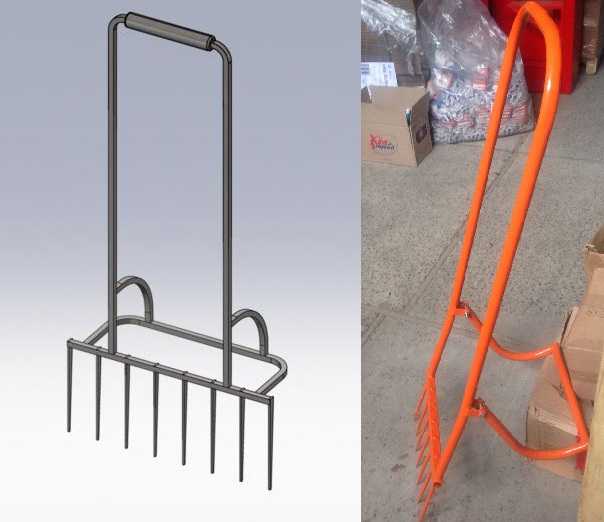

Two options called "Legkokop". The simplest ripper for the garden, garden and cottage
It is difficult to say whether this variation is better or worse. It would be possible to evaluate only by comparing the work of both copies on the same site.
If you watch the next video, you will see that you can dig with such a miracle shovel not only loose soils, but also heavy ones. And the second thing you can pay attention to - after all, for such a soil it is better to have a second comb of pins, against which you can crush the inverted clods.
Types of smart tools
Before buying a miracle shovel, you should carefully study the varieties of this tool on the market. The choice must be made, taking into account the nature of the work for which the device is being purchased, the available budget and reviews about the manufacturer.
Among the popular models of smart shovels are:
- Excavator. These attachments are equipped with sharp teeth that easily enter the ground, which simplifies the process of digging and loosening the garden. The depth of tillage is influenced by the length of the selected cutting and, of course, the efforts of the gardener. On sale you can find models with forks from 5 to 8 teeth.
- Mole. The bayonet depth of this shovel is at least 25 cm. This hole is optimal for planting vegetable crops. The tool is produced with steel and reinforced forged teeth of different widths.
- Archimedes' shovel - popular with gardeners due to the presence of a small foot lever, pressing with the foot on which provides soil cultivation without much effort.
- Plowman. This shovel is designed on the principle of a lever system. The lever ensures the passage of the movable teeth through the fixed ones fixed on the frame. Thus, there is a thorough loosening of the soil, without raising and turning the clod of earth by the gardener.
- Tornado is an improved version of the previous model. This tool is lighter and features durable powder coated teeth. It is good for uprooting weeds. But he does not cope efficiently enough with loosening the compacted soil.
- Kozma is a budget model of a shovel for digging up and loosening the earth without turning the layer and digging out root crops. It is also convenient for cutting grass. The tool has an additional metal bar to support the foot during work.
- Gaidamakha is a miracle pitchfork for loosening the soil of Ukrainian origin. Increase the productivity of digging a vegetable garden by 5 times. The absence of wooden parts significantly prolongs the life of the tool.
A miracle shovel is worth buying for everyone who wants to save their back and strength when digging a garden.
The work will be easier on pre-moistened soil. But you should be aware that this tool is not suitable for processing virgin, soddy, stony and highly clayey soil.
What and how to make
The designs, as you have seen, are different, but the set of materials will be about the same. Their number differs, but the section and characteristics remain unchanged.
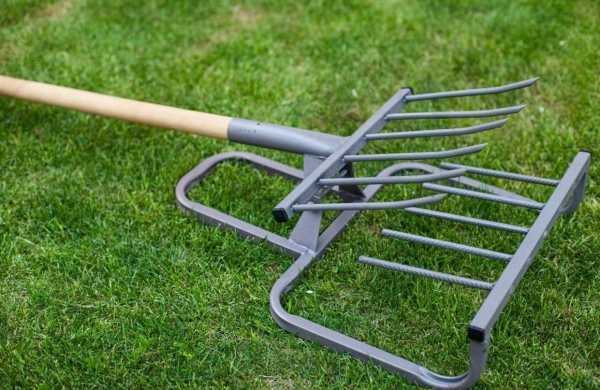

You can use a round or profiled pipe, metal rods or "parts" from the forks
Materials for making
Basically, they start with the manufacture of the frame. It is often made from a profiled pipe, the optimal section is 30 * 30 mm or so. In this case, the wall thickness is important - at least 3 mm. Some models used a corner. The shelf width is also about 30 mm, the metal thickness is at least 3 mm.
The handle can be made from the same profile pipe, you can use a round one. The wall thickness is also important. In principle, having made a retainer, you can use a wooden shovel holder. Some purchased models provide for the installation of a wooden holder.
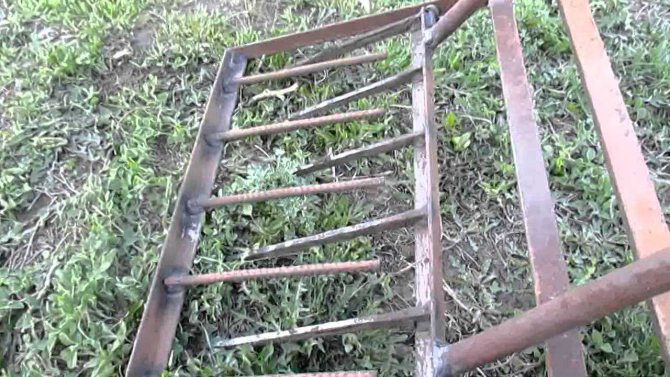

Corner frame
The focus should be on the material used for the fork teeth. It should be good structural steel. Forks are made from a bar of at least 8 mm in diameter.
What do their craftsmen make of:
- Cut off from an ordinary pitchfork, welded onto a miracle shovel.
- Straighten the suspension springs.
- Automobile springs are cut into narrow strips.
If you can find a good bar - round, square or hex - it doesn't matter, it will be much easier for you. Not a bad option, by the way, with a pitchfork. But you have to take good ones, and that is not cheap. And one more thing: calculate the dimensions of the miracle shovel so that the working forks have 8 pins. Then you will need to buy two common pitchfork jokes.
If the design is chosen with two forks - working and persistent, you can put pieces of a suitable length of a metal bar on the persistent ones. The loads are not so high here, so there should be enough strength. The diameter of the bar is 10 mm, you can use ribbed reinforcement, which is used when reinforcing the foundation.
Dimensions (edit)
Most companies that produce miracle shovels have a range of sizes for this product. Our people are different in build and physical fitness. For men, you can make more massive models, and for women and older people - smaller and lighter. On average, the dimensions are:
- The width of the working part is from 45 cm to 60 cm. There is no need to do more: it will be difficult to dig and the productivity will only decrease, not increase.
- The length of the pins of working forks is 220-300 mm.
- The distance between the pins is 70-80 mm.
- The length of the handle is by height, it is more convenient if it ends in the shoulder area.


The dimensions of the miracle shovel can be selected "for yourself" - it is important to work comfortably
All other dimensions are selected depending on the design and the material used.
Bicycle plow


The mini plow variant is a steering shovel. The usual working blade of the shovel is connected to the bicycle handlebar by a metal tube, the welding connection passes to the side of the working blade. A spring mechanism is added for height adjustment. The pipe itself is sharpened from the working side. The principle of the inventory is rotary. The working blade is lowered into the ground and the soil is thrown to the side by turning the steering wheel. The volume of soil processed in one turn is several times greater than when working with a classic garden tool.
Professional garden ratchet pruner
Principle of use
The correct use of the forks makes all gardening tasks much easier. First of all, we are talking about the teeth, their strength should correspond to the task. Forks with thin teeth should not be used for digging, since at best it will be possible to achieve only slight aeration of the soil, but there is a great risk of breaking or bending the tool. To a lesser extent, the correctness of use concerns the cutting, but here, too, a shorter cutting is needed for loosening, and longer for carrying heavy loads. In addition, a universal rule for agricultural implements: the length of the handle should be on the shoulder of the worker. In this case, a telescopic pitchfork can become salvation, which is perfect for those summer residents whose whole family loves to work in the garden with their own hands.
Rake
It is very important to loosen and level the surface layers of the soil before planting the plants. This can be done with a simple tool - a rake, which is made from different materials. It is not recommended to cultivate heavy soil with a wooden rake. They are very light, so you have to make some physical effort working with them. It is better to loosen such soil with an iron rake.
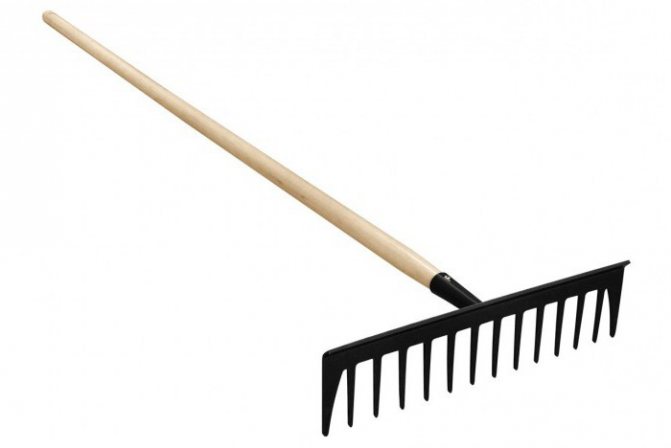

When choosing garden tools for loosening the soil, you need to carefully examine it, especially the back side. It is important to know that a solid metal bar is stronger than a composite one. And wide is better than narrow. Usually a rake has twelve teeth, but for loosening large areas, sixteen or more are needed.
FOUR RICHES
The miracle rippers called "Excavator" are not 3, but all 4!
The lighter rippers last a little longer, while the heavy rippers are faster to control. Lightweight "Diggers" with 5 and 6 teeth will loosen strips 42 and 48 cm wide, respectively. If you know how to work with "Moles", you will be able to work with "Excavators": deepen the working part into the soil and lower the stalk, thus holding a layer of earth through the oncoming pitchforks. If you need to do the excavation as quickly as possible, use a 7-tine Excavator (digging width 55 cm) or 8 tines (digging width 62 cm). The producers added a hole for the second cutting to the most heroic "Diggers". Attached to such a "toothy" assistant and a removable crossbar. It can be fixed simultaneously on two cuttings - and you get a U-shaped handle, which will be comfortable to hold with both hands.
Features of choosing a shovel for a dig
A shovel for a treasure hunter and a shovel for digging potatoes are similar in the same way as the VAZ-2105 Lada are similar to the Mercedes E-Klasse. Also a sedan and 4 wheels. It must meet most, or better all, requirements:
- be bayonet;
- overall length no more than 850 mm (so that it fits in a backpack and does not constantly carry it in your hands);
- the size can be achieved due to the design - telescopic, folding or collapsible;
- to be strong and reliable - not to break on difficult ground;
- the material of the bayonet should ensure the retention of sharpening during the search; weight - preferably up to 1.5 kg;
- ergonomic handle.


Tornado cultivator
Gardeners who take care of their health have not used shovels at their summer cottage for a long time, many successfully use the Tornado device. Because of its ease of use, this tool is often called a “female” shovel.
The construction is made using the following materials:
- Metal rod;
- Rotary handle;
- A work unit with sharp teeth that are counterclockwise;
- The structure is bolted with nuts.
The cultivator is a rather multifunctional tool for high-quality processing of land plots; it can perform various work of any complexity.
Advantages:
- Provides safety during gardening or summer cottage work;
- Reasonable price, unlike a motor-cultivator;
- Does not burden the back. During the excavation of the area with a conventional shovel, the load is incorrectly distributed throughout the body. Applying "Tornado" at the dacha - both sides of the body are involved, which strengthen the muscle corset, without creating the need to bend.
It is quite convenient to perform all types of work with the cultivator, the risks of injury are reduced to zero. Digging a suburban area brings pleasure with the least fatigue.
How does it work


Before starting the excavation of the site, the tool is placed in an upright position with sharp teeth in the ground. Next, turn the handle 360 degrees, so the teeth are immersed in the soil. The process takes place with minimal effort. The cultivator loosens the soil, removing weeds. The device is quite functional: it digs holes and beds well, helps to harvest.
The people who came up with the tool took care to avoid cracks on the palms and calluses on the fingers during the processing of the soil with the equipment. It is very convenient to hold it in your hands.
Using "Tornado" at their summer cottage, working with the tool will be beneficial and enjoyable. For senior citizens, it is a great option to avoid problems with the back and other parts of the body.
No, this is not a deadly wind, but an unusual structure that can also plow a garden. But for a full-fledged digging, it is still not suitable. Although the authors of this video
At the end of the article, I would like to inform you that the choice of new technology, even manual, must be approached wisely, carefully studying and trying for strength with your own hands the tools that you are going to purchase. It is also worth noting that the quality of the materials from which modern hand tools are made for working in the country leaves much to be desired. Are you ashamed, gentlemen, manufacturers?
We suggest you familiarize yourself with: Spicy sauerkraut recipe with chunks of pepper
P. S. This year I am doing the following experiment. I buy an "Excavator", a steel bayonet shovel (a shovel made of metal of unknown origin could not stand it, read about it at the very beginning of the article) and Fokin's large plane cutter. Throughout the season I will use these devices in full force, and at the end I will report the results.
ONLY FORWARD!
The cultivator "Assistant" is also called a miracle shovel.
By its appearance it resembles "Legkokop", but its design is more convenient. "Assistant" is endowed with two handles. Thanks to the telescopic mechanism, they easily adapt to the growth of any gardener and do not force him to step back when loosening each layer. Main working part
The “helper” is a wide pitchfork (58 cm). Their teeth are long - 28 cm! He also has a second frame - "toothy", with hinges. Thanks to her, the soil is loosened better during digging. The oncoming forks of the "Helper" break even small clods of earth. With it, you will prepare the beds for planting, as they say, in the blink of an eye - and at the same time level their surface.At the same time, the tool will extract the rhizomes of corrosive weeds from the ground, will not force you to bow to the beds and will not turn over the layers of soil, which will certainly be appreciated by adherents of organic farming.
With your own hands
If it is not possible to purchase snow removal equipment, it does not matter. Consider what you can make a shovel from yourself using improvised means:
- The simplest and most affordable option is a wooden shovel made of plywood or OSB.
- If an old baking sheet is lying around on the farm, then it will also serve as material for a shovel scoop.
- After the repair, a piece of stainless steel remained - we use it for the ladle.
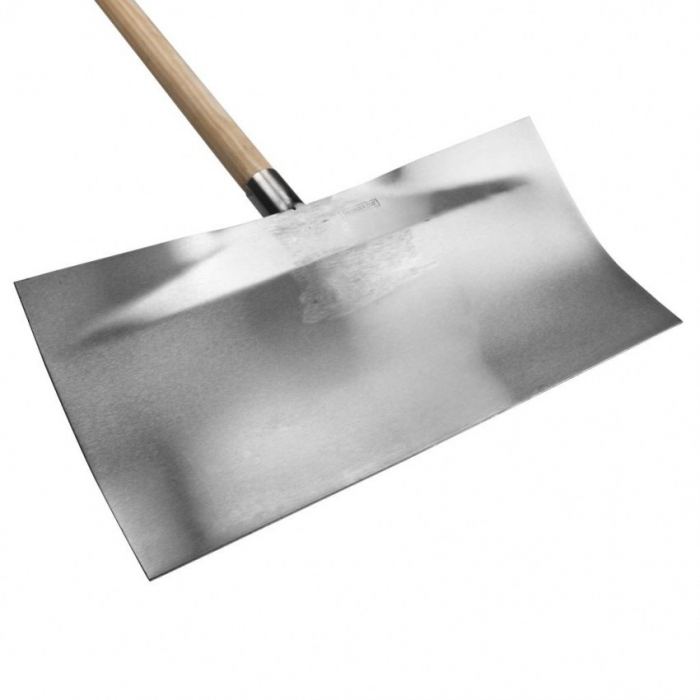

Regardless of which snow removal tool is in your yard, remember that it is better to stock up on them before the first snows. Wear gloves and take care of the tool. So it will serve you much longer.


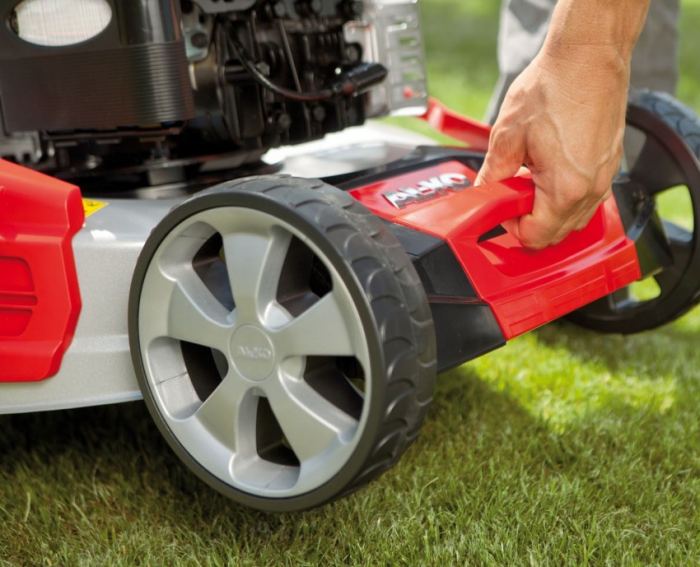

How to choose a gasoline lawn mower: a comparison of types, an overview of models and selection criteria. 145 photos of the best lawn mowers and their characteristics

How to choose a brush cutter for a summer residence: types of garden tools and tips for choosing the best brush cutters (115 photos)
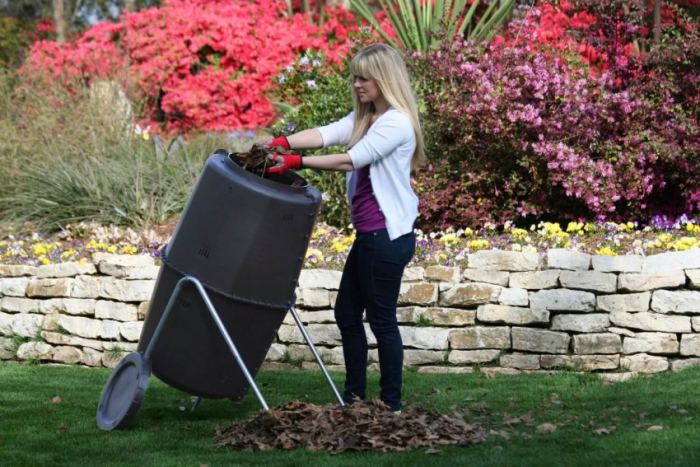

DIY composter - how to make a garden version. Simple and effective models and step-by-step manufacturing instructions (115 photos)


